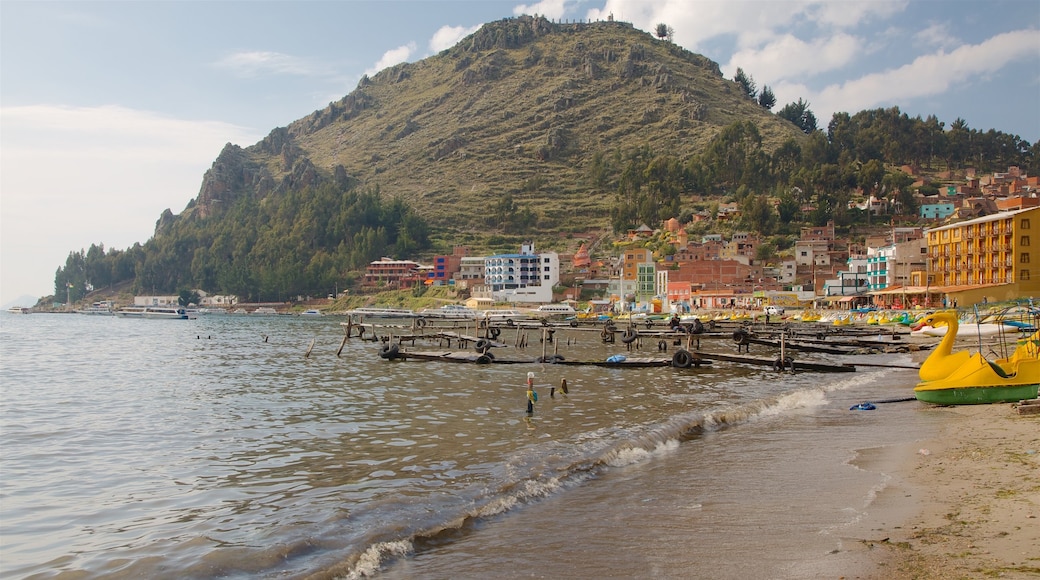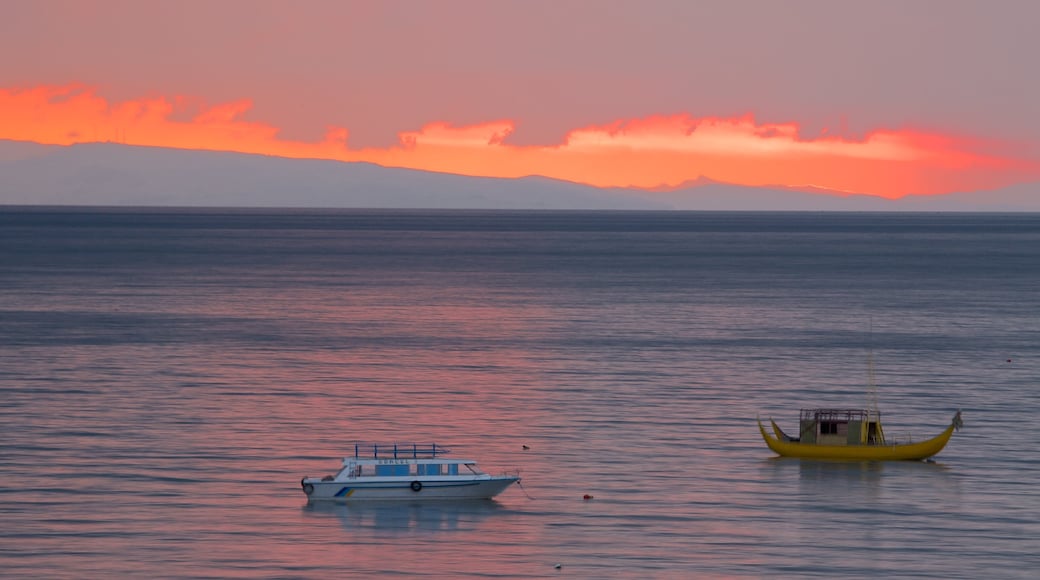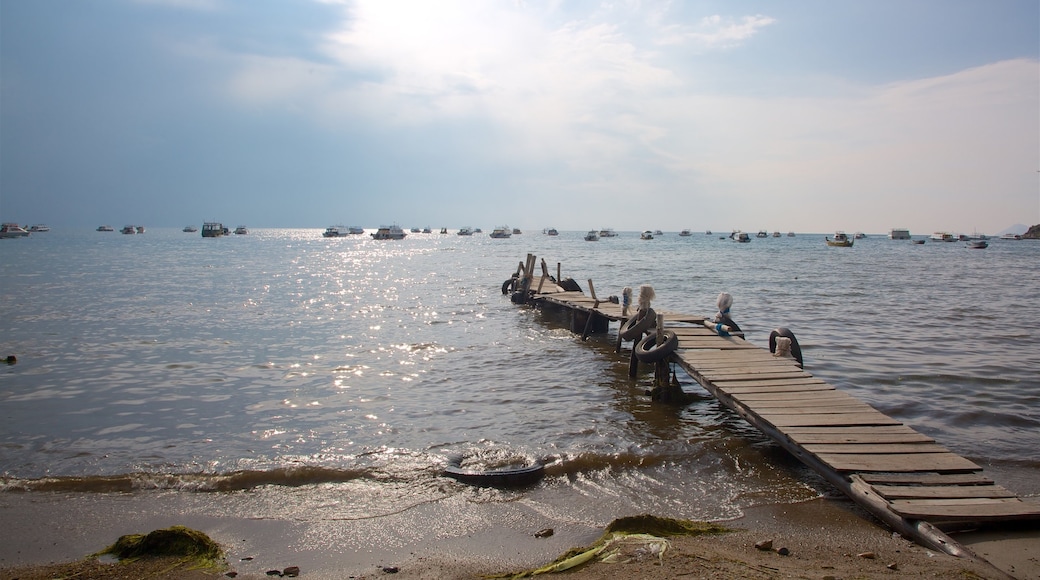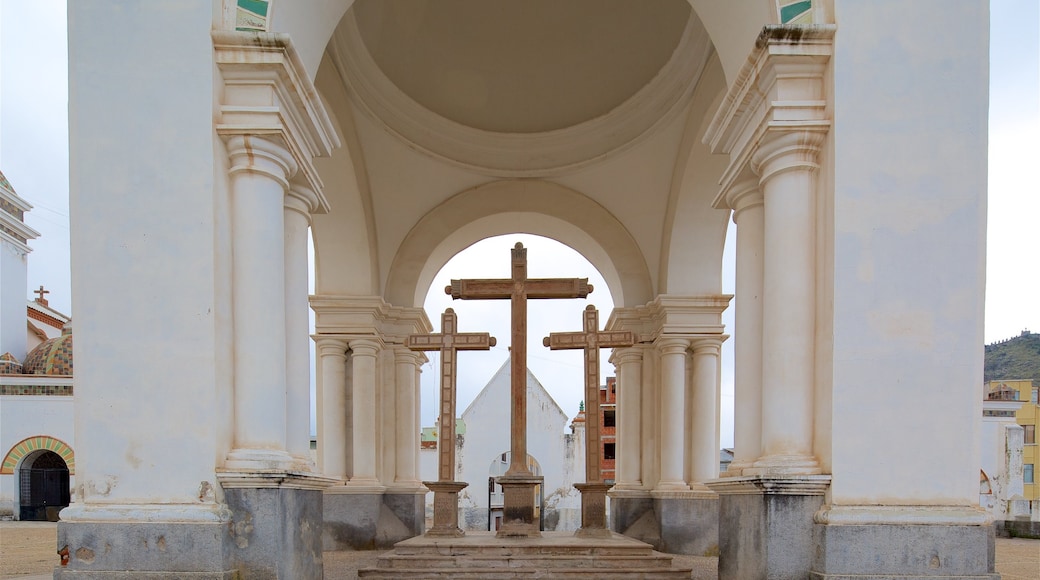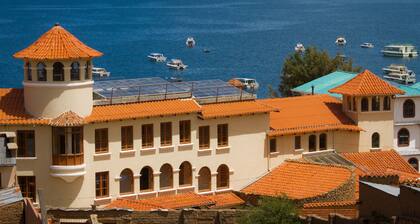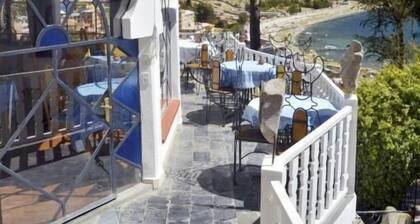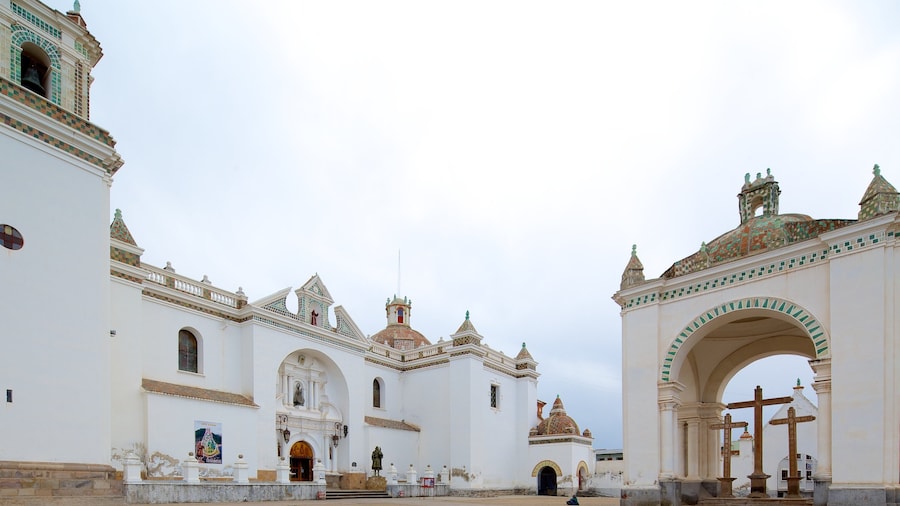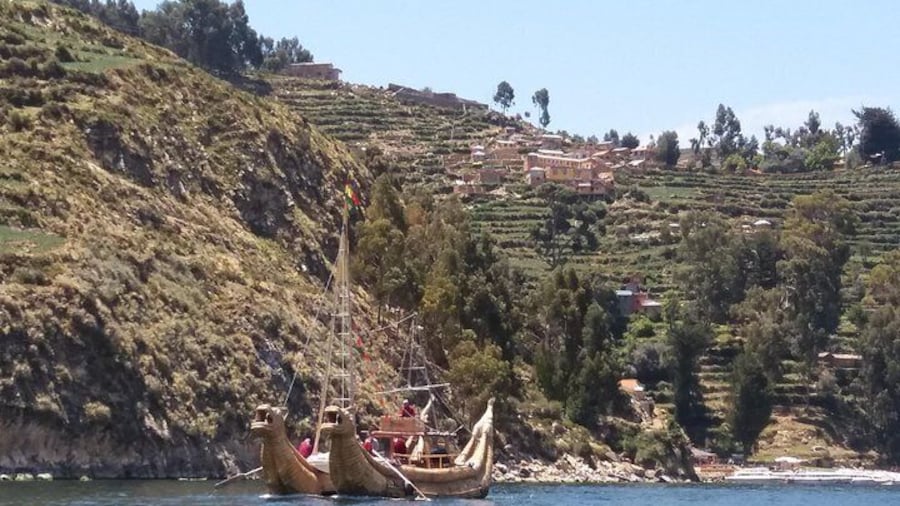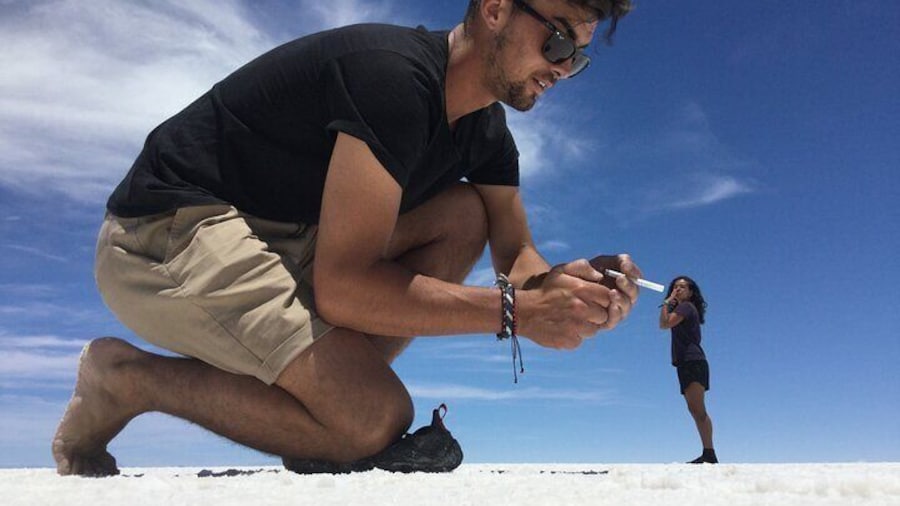The town of Copacabana lies on the southern shores of Lake Titicaca, one of the world’s highest navigable lakes. A boat trip over Titicaca’s deep blue waters to see its scenic islands and mythical Inca ruins is a must-do for visitors to Bolivia.
Copacabana is compact and you can get around on foot. Just take it slow, because the air is thin here at an elevation of 12,602 feet (3,841 meters). Immerse yourself in the Bolivian culture in this popular pilgrim destination by having breakfast at local markets. Order a “mate de coca” (tea from coca leaves), a cure for altitude sickness, and treat yourself to buñuelos (donuts).
On holy days in February, April and August the central Plaza 2 de Febrero fills up with Bolivian and Peruvian pilgrims. Attend the folkloric dances, processions and masses for the Virgin of Candelaria. See her image in the 17th-century Copacabana Cathedral.
Along Copacabana Beach, sample trout from the lake in one of the many restaurants. Join a boat tour to see the ruins and villages of Isla del Sol (Island of the Sun), the birthplace of the Inca dynasty, and Isla de la Luna (Island of the Moon).
Once you are acclimatized, walk to the Iglesia de Colquepata (Church of Colquepata), to find the trail to Cerro Calvario, a place of pilgrimage, offerings and fortunetelling. Another scenic trail leads to the mysterious throne-like rocks of the Asiento del Inca (Seat of the Inca). Ask locals the way to the Baño del Inca, which is a legendary thermal spring in the countryside. Experienced hikers can climb to Horca del Inca, an astronomical observatory made by the Chiripa people, who predate the Incas.
It takes 3 hours to get to Copacabana by bus from La Paz. Puno, in Peru, is just a 2.5-hour bus trip away, but involves a few transfers and a visit to a customs office. Crossing the border by boat is another option.
